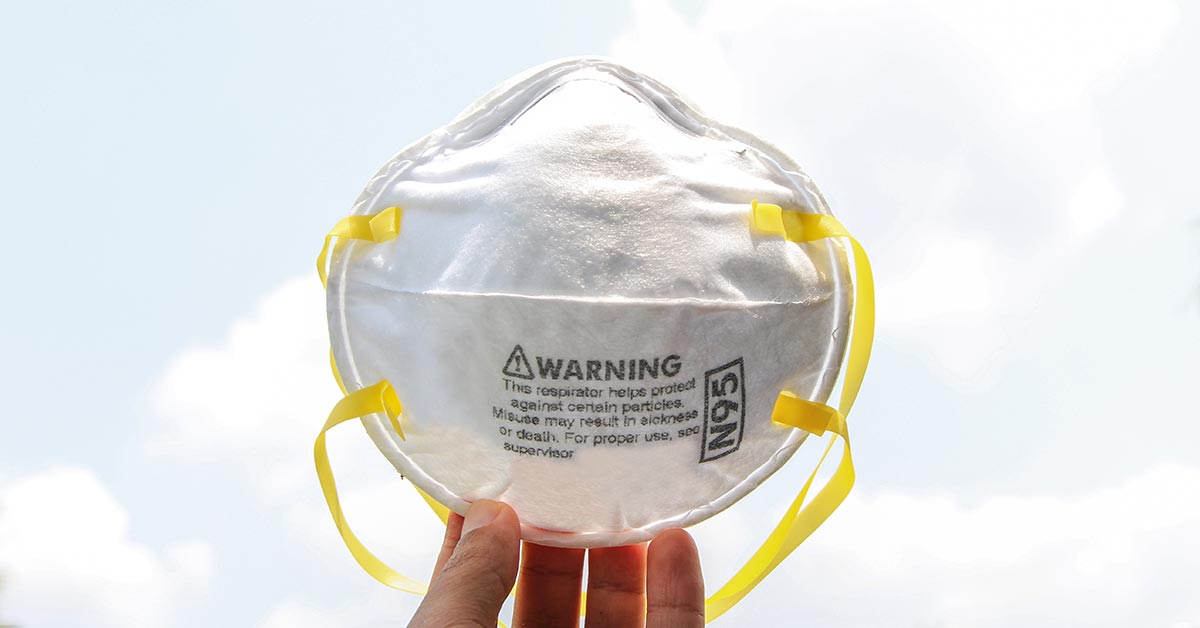During haze periods, face masks are essential in Singapore when the air quality is poor. It is encouraged to use high-quality face masks. In Singapore, the KN95 mask and N95 mask are the two prominent options available. What are the key differences between them?
First of all, it should be noted that N95 and KN95 are in fact “respirators”, even though in common daily parlance they are often referred to as “masks”. The difference between a “mask” and a “respirator” that is masks are primarily intended for stopping the droplets and particles that the wearer breathes, coughs, or sneezes out (though they may still provide protection from particles spread by other people if well fitted to the wearer). On the other hand, respirators are intended to protect the wearer by filtering the air that the wearer breathes in. Respirators (without air outlet valves) also function to protect others by filtering the air that wearer breathes, coughs or sneezes out.
For simplicity, we will continue to refer to N95 and KN95 as masks in this article.
1. Material
Both N95 masks and KN95 masks are primarily made of synthetic material (typically a melt-blown polypropylene). They are designed to be worn over the mouth and nose although N95 and KN95 masks may have different attachment methods for securing the mask to the face. KN95 masks have ear loops that go behind the ears, authentic N95 masks have elastic headbands that go around the head. These attachments help ensure a secure and snug fit for maximum effectiveness.
2. Filtration Efficiency
In terms of filtration efficiency for haze periods in Singapore, the KN95 and N95 Mask are the same. Both KN95 and N95 masks have high filtration efficiency that are rated to capture 95% of tiny particles or >0.3 micron particles. The key distinction lies in the regulatory standards wherein N95 masks conform to the United States NIOSH (National Institute for Occupational Safety and Health) standard while the KN95 masks adhere to the Chinese GB2626-2006 standard. KN95 masks are not certified by the US NIOSH. While the required filtration efficiency of N95 and KN95 masks are similar, N95 masks are required to be slightly more breathable than KN95 masks.
3. Mask Fit
Another factor that differentiates the KN95 and N95 masks is their fit. A mask that is well fitting is of utmost importance, as the mask’s ability to protect the wearer is compromised when the fit is poor. In this regard, there have been studies that show that many KN95 masks “do not meet U.S. standards for effectiveness”. This is despite the fact that KN95 standards require the masks to pass a special mask fit test to ensure a less than 8% leakage. A reason for poorer fit is that KN95 masks typically use ear loops rather than headbands. KN95 masks that use headbands also might perform better.
The proper fit of a mask may also be affected by the wearer sporting excessive facial hair.
KN95 and N95 Mask For Haze Period In Singapore
According to the Ministry of Health, individuals who have to be outdoors for several hours may wear K95 or N95 mask in Singapore to reduce exposure when the forecasted air quality is in the Hazardous range (PSI >300). Although it is to note that the first line of action during the haze period should still be spending time indoors.
KN95 or N95 mask in Singapore are not needed for short exposure when outdoors or when staying indoors.
For the average person (not in a healthcare setting), there should be little difference in choosing between an N95 or a KN95 mask, particularly for haze protection. For the highest level of reassurance, you can consider choosing N95 masks that are NIOSH-certified.
[Updated 14 Nov 23]
Protect against cancer, cardiovascular disease, and other chronic diseases with regular health screening. Compare and shop for health screenings from Singapore and regional healthcare providers at a single convenient platform - shop.health365.sg
This article is informative only and is not intended to be a substitute for professional medical advice, diagnosis, or treatment, and should never be relied upon for specific medical advice.






